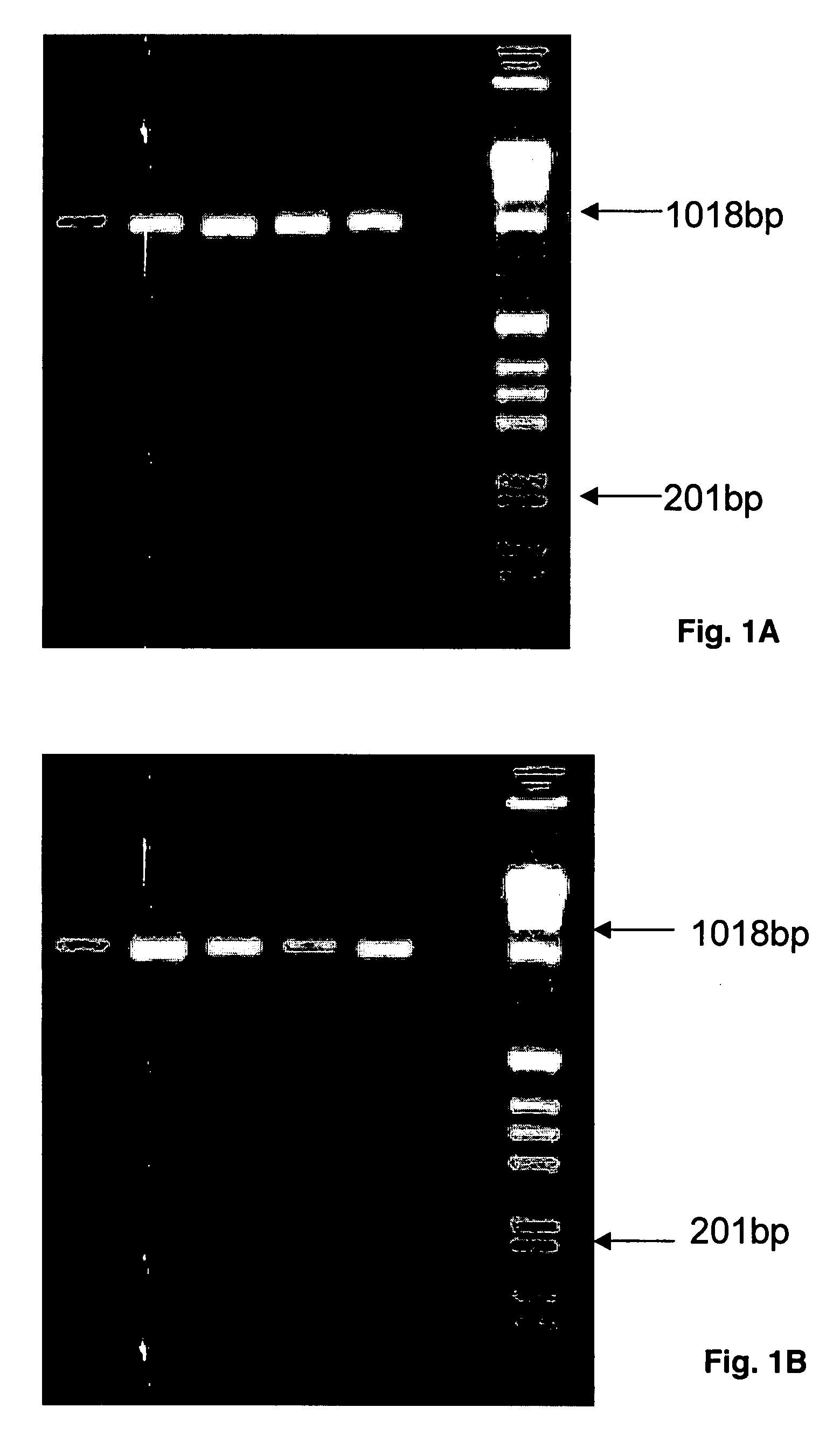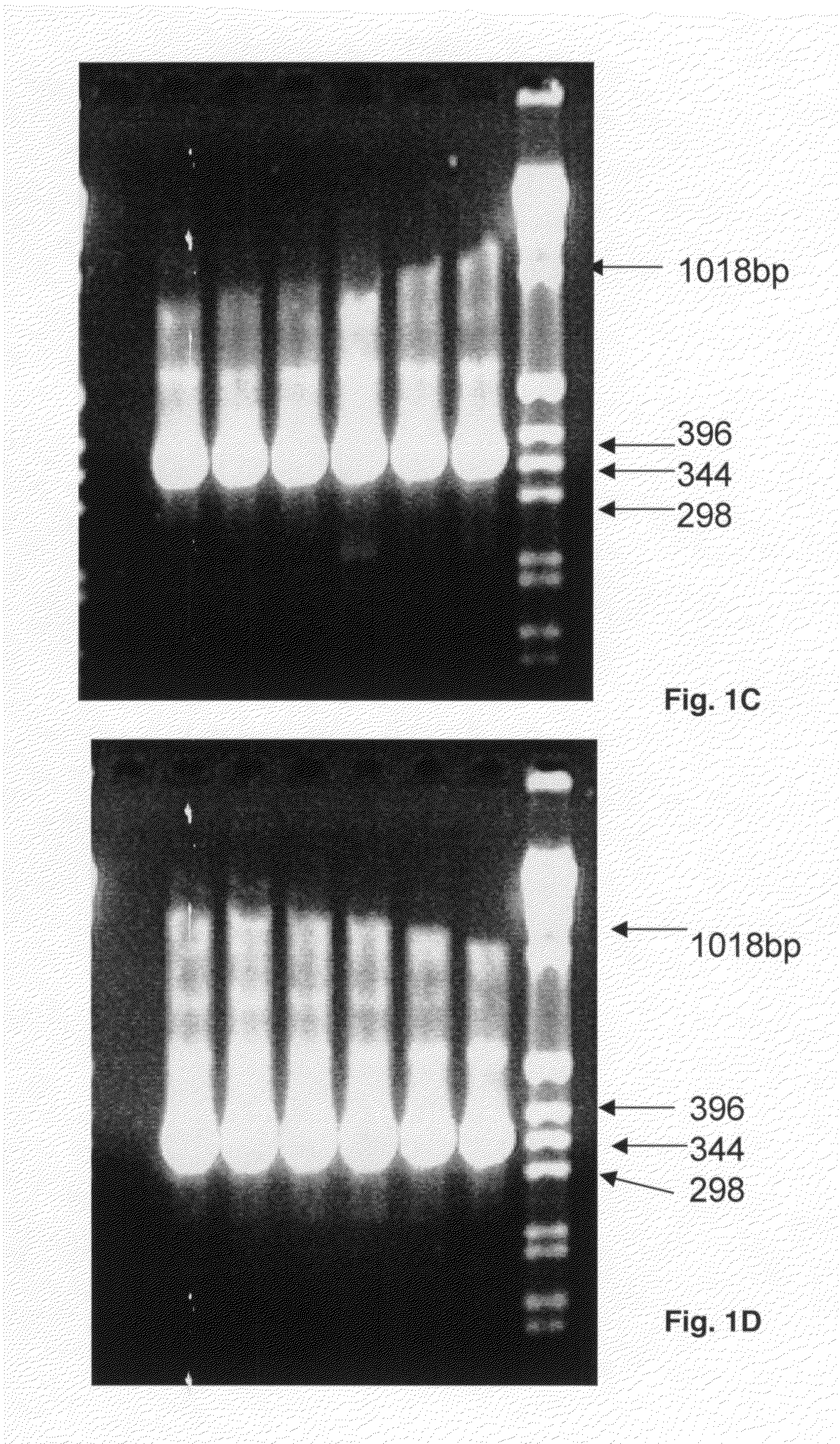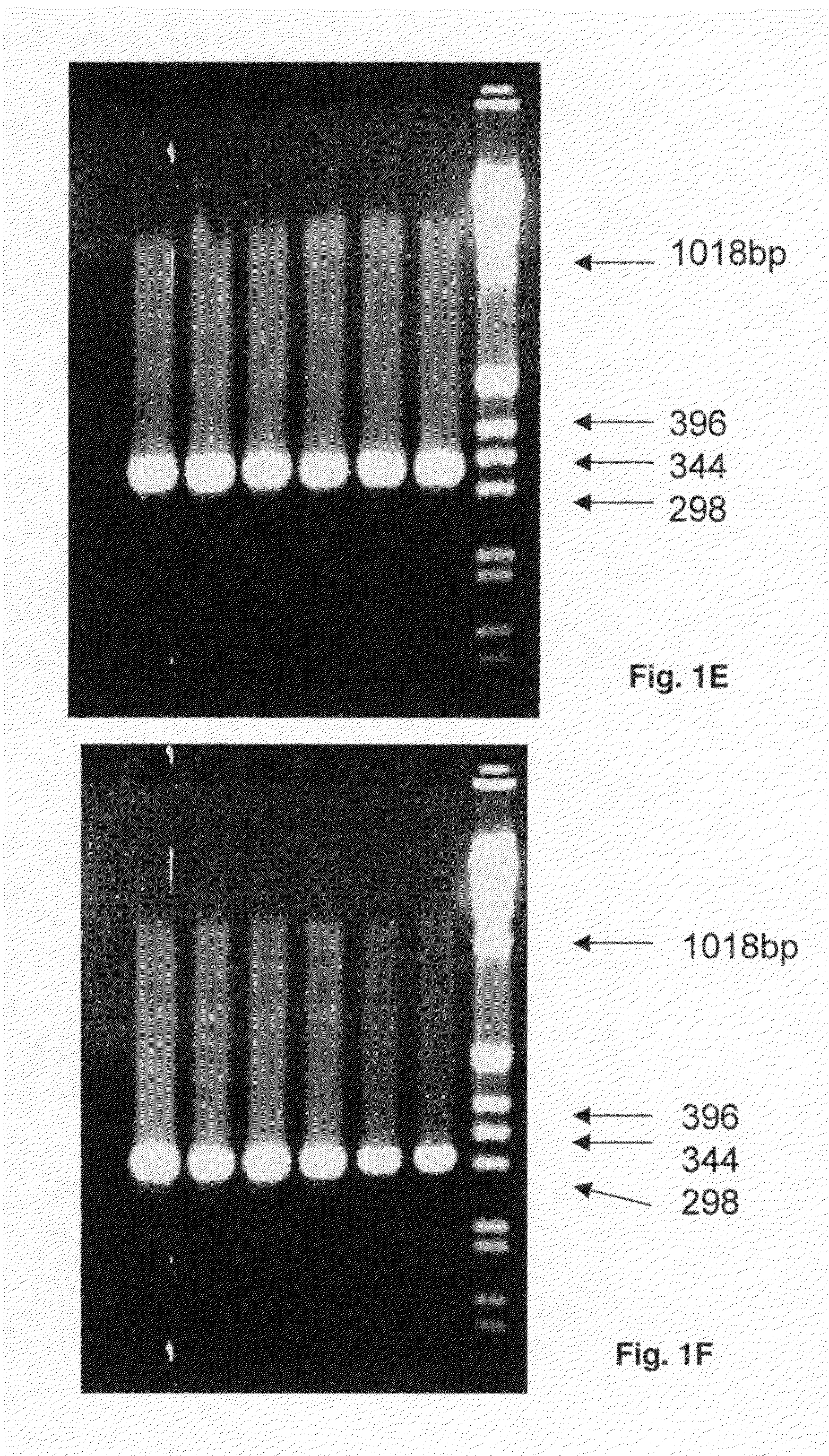Population scale HLA-typing and uses thereof
a population-scale and genotyping technology, applied in the field of microarray technology and population genotyping, can solve the problems of inability to quickly implement population-scale hla-typing technologies, and inability to quickly respond to population-scale emergencies
- Summary
- Abstract
- Description
- Claims
- Application Information
AI Technical Summary
Benefits of technology
Problems solved by technology
Method used
Image
Examples
example 1
Primers for Amplification of Class I and II HLA Loci
[0069]Validation of Algorithms for Design of SNP Specific Primers
[0070]Forward primer 5′GCTCCCACTCCATGAGGTAT3′ (SEQ ID NO: 1) and reverse primer 5′ATACCTCATGGAGTGGGAGC3′ (SEQ ID NO: 2) was used to amplify an exon 2 PCR product for Class I HLA-B type to generate a specific product of 456 bp (15). The algorithms presented herein are used to ascertain the uniqueness of these primers to see if they primed only the exon 2 the Class I HLA-B locus. It was determined that the forward primer could bind to 11 other locations within chromosome 6 and also bind to one other location on chromosome X. The reverse primer for exon 2 of the Class I HLA-B locus was found to bind to five other locations on chromosome 6 and one location on chromosome 4 and 13. Another primer 5′ACCCGGTTTACCCGGTTTCATTTG3′ (SEQ ID NO: 6) for the amplification of exon 3 of Class I HLA-B was found to bind in eight locations on chromosome 6 other than intron 2, position 164-...
example 2
Primary and Secondary Amplification of Class I and II HLA Loci
[0081]HLA-A and B loci and exons 2 and 3
[0082]In primary PCR reactions primer pairs A-LOC-FP1 / A-LOC-RP1 for HLA-A locus and B-LOC-FP1 / B-LOC-RP1 for HLA-B locus are used to generate amplified products of various UCLA standards, a positive control and a negative control. The PCR protocol is for a 50 μL volume in 96 well plate: one pre-PCR denaturing cycle 94° C. for 4 min, 35 PCR cycles at 98° C. for 1 min, 71° C. for 1 min, 72° C. for 1 min; hold cycle 72° C. for 7 min (polymerase: Roche Fast Start Taq). Amplified products (10 μL samples) are run on a 2% agarose gel at 150 volts for 35 min (Lane 1: C1-034, Lane 2: C1-035, Lane 3: C1-036 and Lane 4: CCR1), a positive control (Lane 5: Roche DNA) and a negative control (Lane 6: H20); the last lane has weight standards. The gels show products of 980 bp for HLA-A (FIG. 1A) and 1007 bp for HLA-B (FIG. 1B).
[0083]In secondary PCR reactions primer pairs A-X2-FP1 / A-X2-RP1 and A-X3-F...
example 3
Probe Design for Microarray
[0090]General Design
[0091]A suitably designed microarray is used to test the hybridization parameters in all possible nearest neighbor contexts for a given mismatch. This allows for emulation of any sort of single nucleotide polymorphism. For a triple sequence there are 64 combinations which are studied by the central base pair and mispair in their nearest neighbor contexts. The results from all these combinations, enables prediction of the binding properties of the single nucleotide polymorphism for any HLA subtype. This is a much better estimate of the binding characteristics than from thermal melting profiles.
[0092]Briefly, for the HLA-B model the known allelic diversity of HLA-B defines 137 polymorphisms of clinical or epidemiological value, thus requiring a set of 137 allele specific probes to provide for a full hybridization analysis. Using the adsorptive approach to microarray manufacture described herein produces excellent single nucleotide specifi...
PUM
| Property | Measurement | Unit |
|---|---|---|
| time | aaaaa | aaaaa |
| volume | aaaaa | aaaaa |
| volume | aaaaa | aaaaa |
Abstract
Description
Claims
Application Information
 Login to View More
Login to View More - R&D
- Intellectual Property
- Life Sciences
- Materials
- Tech Scout
- Unparalleled Data Quality
- Higher Quality Content
- 60% Fewer Hallucinations
Browse by: Latest US Patents, China's latest patents, Technical Efficacy Thesaurus, Application Domain, Technology Topic, Popular Technical Reports.
© 2025 PatSnap. All rights reserved.Legal|Privacy policy|Modern Slavery Act Transparency Statement|Sitemap|About US| Contact US: help@patsnap.com



